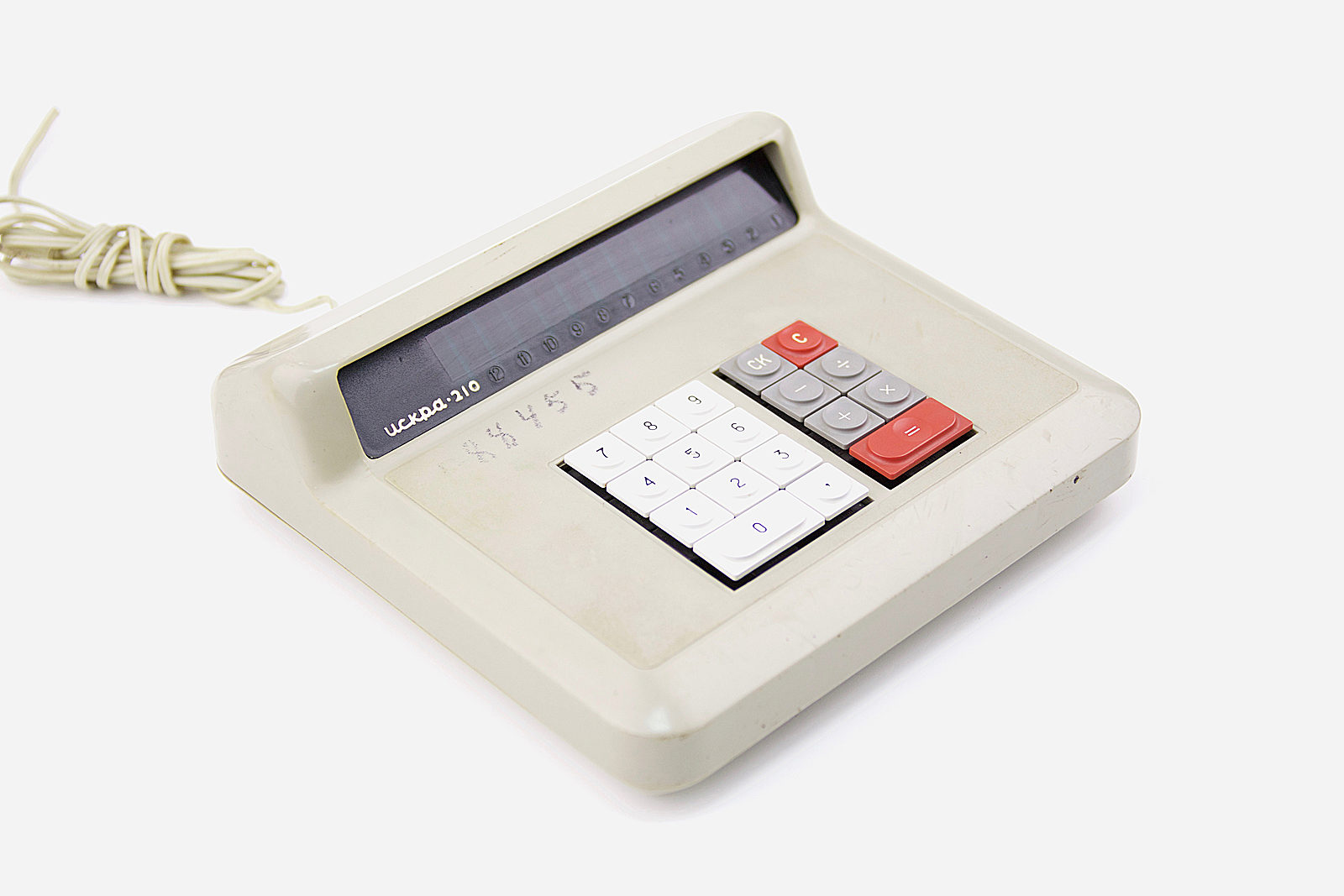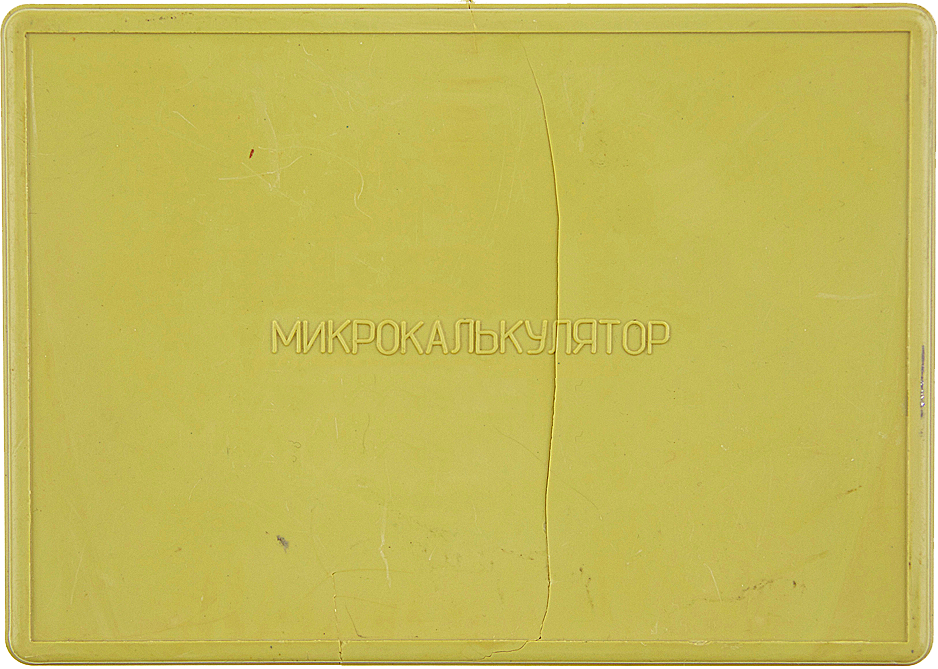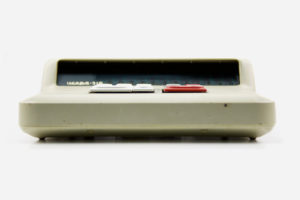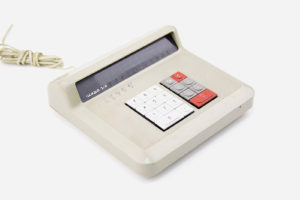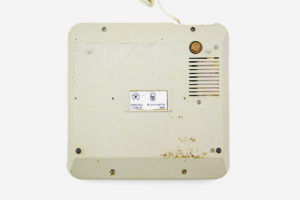- 1980 -
Iskra-210
The progress made in the realm of large-scale MOS integration led to the development and mass production of EKVM models the logic circuits of which were all incorporated into a single integrated circuit. As a result, the size of calculators went down significantly.
The scale on the monitor: 1:1





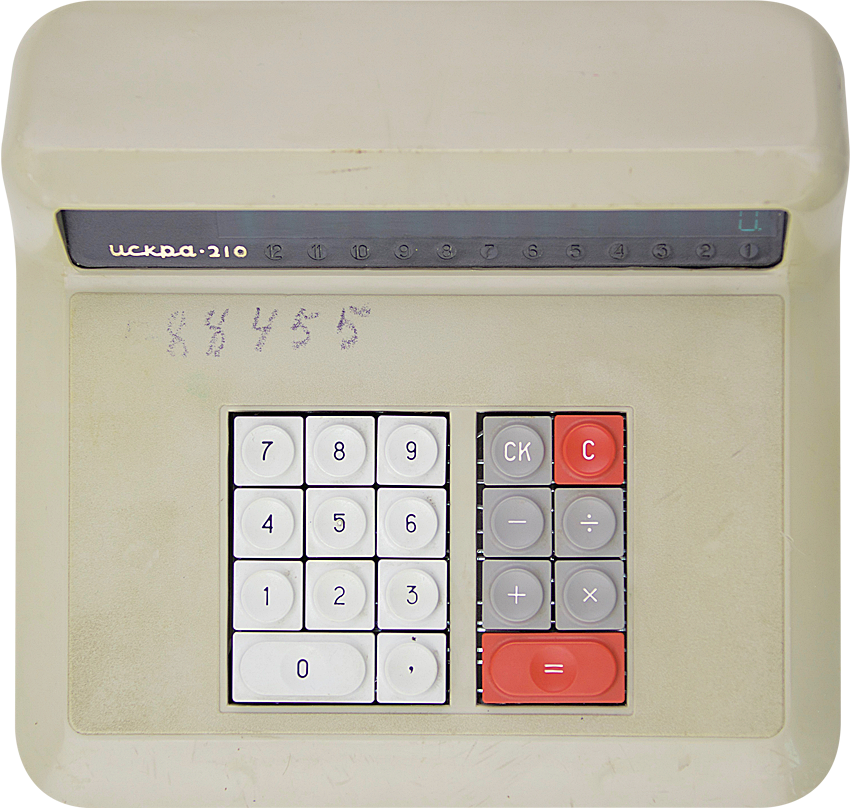
Iskra-210 was developed in 1979 and was one of the first LSI-based calculators (large-scale integration calculators, up to 1,500 transistors implanted onto the crystal). The machine’s LSI includes two numerical memory registers, three ring counters for synchronisation, a display input register, a coder, a decoder and a microprogram automaton.
The complete set of the calculator features the following functional microcircuits:memory and synchronisation units containing 1,012 integrated elements, an arithmetic circuit, an input device, a control unit and a four-phase impulse generator containing 150 integrated elements.
The machine performs the four arithmetic operations and calculations with constants. The display can show numbers with up to 12 digits.
The calculator uses semi-fixed points: in order to enter a point, one has to successively press the “0” key. The point is placed at the 8th digit by default, but it can be moved back and forth by successively pressing the “0” key. After that the user has to enter the number (a five-digit number by default) and proceed to entering the fractional part after pressing the “,” key.
